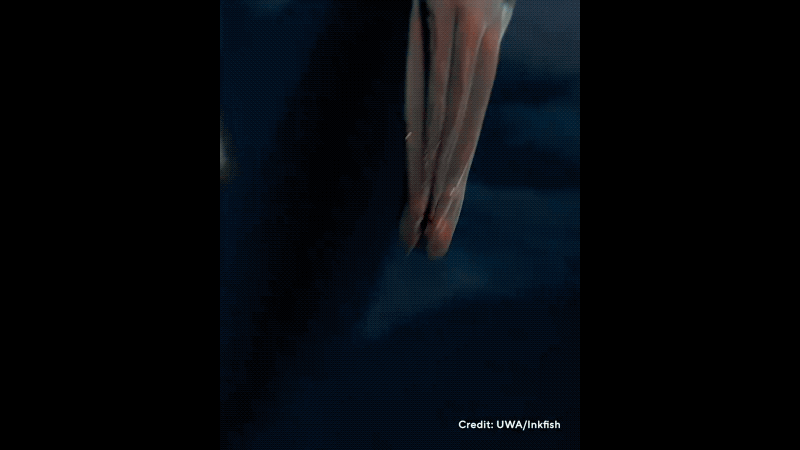A team of marine researchers with the Minderoo—UWA Deep Sea Research Centre got a treat recently, when a rare deep-sea hooked squid (Taningia danae) mistook the crew’s baited camera for prey. The team captured the remarkable footage about 3,281 feet (1 kilometer) beneath the waves in the South Pacific, north of the Samoan Passage.
In a short but mesmerizing encounter, caught on multiple cameras, the 30-inch-long (75 centimeter) squid grabs on to the end of the camera arm and quickly aborts its mission, jetting off into the depths.
“Many records of this species are from strandings, accidental bycatch or from the stomach contents of whales,” said Alan Jamieson, director of the research center, in a UWA release. “The rarity of live observations of these amazing animals makes every encounter valuable in gathering information on geographic locations, depth, and behaviour, plus it is such a unique animal that we hardly ever get to see, so we had to share it.”
Though the squid isn’t the largest—that title belongs to the colossal squid (M. hamiltoni) in terms of mass and the giant squid (A. dux) in terms of length—it does have one size superlative to its name. The deep-sea hooked squid has two large photophores on its arms, which the squid flashes to disorient its prey. The photophores are the largest in the animal kingdom. The organs are a form of bioluminescence, which is not uncommon among deep sea creatures, especially predators.

“The squid…descended on our camera assuming it was prey, and tried to startle it with is huge bioluminescent headlights,” said Heather Stewart, chief scientist of the team, in the same release. Indeed, if you look closely the squid reveals its photophores as it swoops into view, and orients them directly towards the camera. After latching onto the camera for a couple of seconds, the invertebrate gave up on the meal, and swam back out of frame.
Currently, the research vessel RV dragon is conducting its final few weeks of a three-month-long trip in the field, investigating the Nova Canton Trough in the Pacific Ocean. The team is specifically looking for life and interesting underwater geographies between 1.86 miles (3 km) and 8 miles (12.87 km) beneath the surface.
At such depths, who knows what they may find? If the squid spotted at less than a mile down is any indication, the answer could be some spooky, albeit amazing, animals.
